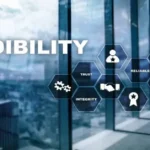In the aviation sector, Southwest Airlines has long been associated with success, innovation, and satisfied customers. It all started with a small plane in 1971, but now the airline is a global powerhouse in the budget airline industry. Southwest Airlines has had an interesting and successful path, and this article takes a look at that journey, analyzing the company’s history, business model, corporate culture, and what has made it such.
Founding and Early Years
The airline first took off in 1971 after being established in 1967 by Herb Kelleher and Rollin King. This unconventional airline first catered to Texans on short-haul, point-to-point services. Southwest was able to offer its customers more convenient, direct flights by avoiding the intricacies of hub-and-spoke systems.
The Low-Cost Carrier Model
Southwest Airlines’ low-cost carrier (LCC) business model is an important differentiator. The airline has maintained cheap fares by utilizing a point-to-point route structure, reducing operational costs, and flying only Boeing 737s. Lower ticket pricing are one way Southwest passes the savings on to customers, which helps the company attract a wide range of passengers.
A Fleet of 737s
Southwest Airlines uses the Boeing 737, which is one of the simplest planes in the business. Saving money on operations, training, and maintenance is possible because to this standardization. Not only that, but it makes scheduling easier and allows the airline to react faster to changing market conditions.
Culture of Customer Service
Customer service is ingrained in Southwest’s culture and has earned the company a reputation for excellence. Customer satisfaction has been continuously excellent, and staff members are well-known for their warmth and friendliness. In a field where customer service isn’t always top-notch, the airline stands out for its dedication to providing a pleasant travel experience.
Employee Relations and Profit Sharing
Even though airline companies often face problems, Southwest has always had good ties with their employees. The profit-sharing program is a distinctive feature of the company’s culture since it allows employees to get a portion of the company’s profits. As a result, workers are more invested in the company’s success and feel more ownership over their work.
Innovative Marketing and Advertising
In the history of advertising and marketing, Southwest Airlines has been an innovator. The airline’s unique character is in part due to its infamously funny and unusual advertising campaigns. The advertisements for Southwest’s “Wanna Get Away?” and other innovative social media campaigns demonstrate the company’s mastery of audience involvement.
No Baggage Fees and Fair Pricing
Southwest stands out from the crowd by not charging customers for the first two checked baggage, even though many other airlines do the same. Customers appreciate the airline’s commitment to providing value through this clear pricing policy. One of the most important ways to earn passengers’ confidence and loyalty is to never charge them unexpected costs.
The Southwest Effect
When Southwest Airlines joins a new market, it often causes other airlines to follow suit, resulting in cheaper rates and more competition—a phenomenon known as the Southwest Effect. The presence of the airline usually increases demand, which in turn causes rival carriers to change their prices and offerings. Because of this domino effect, low-cost airlines are now more powerful than ever before in the airline business.
Adaptation to Industry Challenges
The COVID-19 epidemic, economic downturns, and fuel price variations are just a few of the obstacles that Southwest Airlines has had to overcome. The airline has been able to withstand these storms thanks to its agility and intelligent decision-making. As the aviation market has changed, the airline has adapted by focusing on cargo operations, expanding its route network, and introducing international flights.
Sustainability Initiatives
Sustainable practices have grown more popular among airlines in recent years, and Southwest is only following suit. Purchasing more fuel-efficient planes, streamlining operations, and investigating alternative aviation fuels are all ways the airline is working to lessen its negative influence on the environment. These endeavors demonstrate Southwest’s dedication to ethical business methods.
Community Engagement
In terms of corporate social responsibility and community involvement, Southwest Airlines is in the forefront. The Southwest Airlines Foundation is one of several corporate efforts that give back to the community and nonprofits. The airline’s good reputation and beneficial social influence are both bolstered by its dedication to give back.
Conclusion
Innovation, a focus on customers, and a solid company culture are the three pillars upon which Southwest Airlines’ success rests. Southwest has proven time and again that it can bounce back from setbacks and adapt to new circumstances, going from being a regional airline to a worldwide powerhouse in the aviation business. The airline is a model of success in today’s fast-paced business environment because of its dedication to customer service, emphasis on keeping things simple, and positive workplace culture.
Also Read: The Best Airlines to Fly.
Frequently Ask Questions (FAQs)
What is Southwest Airlines known for?
Southwest Airlines has built a stellar reputation as a low-cost carrier because to its dedicated employees, inexpensive fares, and friendly, supportive business culture. Notable features include an open pricing policy, a fleet that mostly consists of Boeing 737 aircraft, and the elimination of baggage taxes for the first two checked bags.
How did Southwest Airlines start?
Rollin King and Herb Kelleher established Southwest Airlines in 1967. It first took to the skies in 1971 using a novel low-cost carrier concept to service short-haul, point-to-point routes inside Texas.
What is the Southwest Effect?
When Southwest Airlines entered a new market, it caused prices to drop and competition to heat up—an effect known as the Southwest Effect. Other airlines often change their prices and offerings in response to Southwest’s existence, which increases demand.
Why does Southwest only use the Boeing 737?
Almost every plane in Southwest Airlines’ fleet is a Boeing 737. One reason the airline can keep its fares cheap is because of all the standardization that has taken place in areas like training, operations, and maintenance.
Are checked luggage charged by Southwest Airlines?
The first two bags passengers check with Southwest are often free of charge. Differentiating itself from other airlines, this one uses transparent pricing to win over customers’ trust and loyalty.











